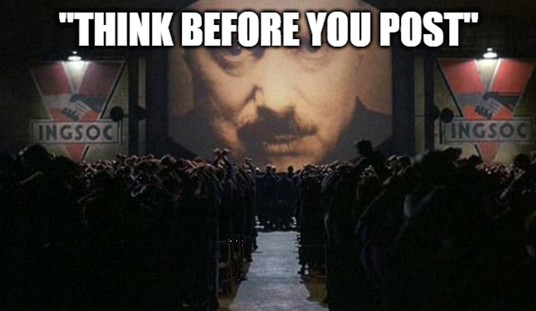Just to follow up on our post from this morning, apparently, experts agree with us and they’re questioning the use of plexiglass barriers to stop the transmission of Covid-19 at tonight’s debate as well:
The plexiglass really brings this laughably inadequate infection control theater set together. https://t.co/3N9E0wDQ6N
— Dr. Angela Rasmussen (@angie_rasmussen) October 7, 2020
Basically, it’s a salad-bar sneezeguard for the debate:
RIGHT NOW on our NYT live election briefing:
“Those plexiglass barriers are really only going to be effective if the vice president or Kamala Harris are spitting at each other,” said Ellie Murray, an epidemiologist at Boston University.
“Those are really just splatter shields.”
— Lauren Wolfe (@Wolfe321) October 7, 2020
As we wrote earlier today, “security theater” that does NOTHING:
The plexiglass barriers being used at tonight’s debate are pretty useless, experts say.https://t.co/d1b2Jxmoed
— Lauren Wolfe (@Wolfe321) October 7, 2020
From an actual expert ==>
Imagine you're sitting in a restaurant at tables this far apart. Someone at the other table is smoking. Are these barriers going to do anything? https://t.co/0GekgwCub7
— Linsey Marr (@linseymarr) October 7, 2020
If they’re really concerned, everyone should mask up inside the debate hall:
Recommended
Masks will do a lot more than plexiglass if they're already distanced. https://t.co/47jlA5CaEN
— Linsey Marr (@linseymarr) October 5, 2020
And there’s a chance the barriers could increase the risk to one or both candidates:
Similar idea as plexiglass barriers https://t.co/wQPhrwDaD1 "Measurement of ventilation and airborne infection risk in…hospital wards" by @CathNoakes Partitions in hospital ward lead to increased airborne infection risk in some locations and decreased risk in others. pic.twitter.com/m2XqrXEjrD
— Linsey Marr (@linseymarr) October 6, 2020
“At best it does NOTHING, at worse it changes the airflow patterns in the room and can cause pooling of air, hotspots, and reduced ventilation effectiveness” is the hill Dems were ready to die on?
1/2 We do not recommend acrylic room dividers for reducing risk of airborne transmission. At best it does NOTHING, at worse it changes the airflow patterns in the room and can cause pooling of air, hotspots, and reduced ventilation effectiveness.
— Dr. Shelly Miller (@ShellyMBoulder) September 29, 2020
It’s physics!
More on plexiglass barriers. Positive airflow going toward the barrier will ALWAYS create negative flow behind the barrier drawing particles to that space. This applies to schools, stores, offices and the debate stage. This is not debatable – it's physics.
— Jim Rosenthal (@JimRosenthal4) October 7, 2020
More here:
You create a recirculation zone behind barriers like plexiglasses, benches, wall separators etc. So it means that a large vortex (or many of them) can form. Aerosol concentration can get trapped behind the wall in concentration pockets. pic.twitter.com/hbWj3vx0Sl
— Ville Vuorinen (@VVuorinenAalto) October 7, 2020
***
Related:
SECURITY THEATER: These are the plexiglass barriers Dems think will stop an airborne virus at the debate tonight?! https://t.co/KyXVuX8Sf1
— Twitchy Team (@TwitchyTeam) October 7, 2020
























Join the conversation as a VIP Member